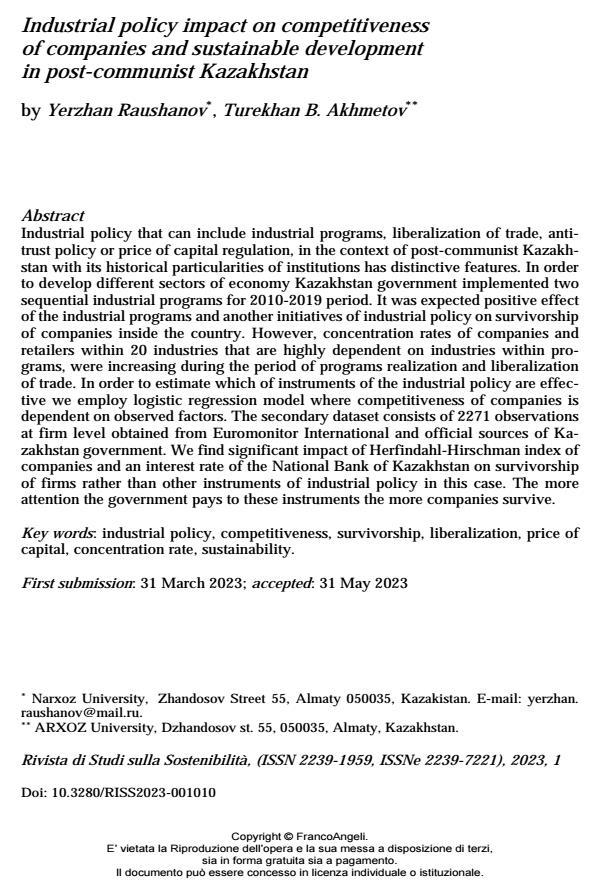Industrial policy impact on competitiveness of companies and sustainable development in post-communist Kazakhstan
Titolo Rivista RIVISTA DI STUDI SULLA SOSTENIBILITA'
Autori/Curatori Yerzhan Raushanov, Turekhan B. Akhmetov
Anno di pubblicazione 2023 Fascicolo 2023/1
Lingua Inglese Numero pagine 20 P. 167-186 Dimensione file 174 KB
DOI 10.3280/RISS2023-001010
Il DOI è il codice a barre della proprietà intellettuale: per saperne di più
clicca qui
Qui sotto puoi vedere in anteprima la prima pagina di questo articolo.
Se questo articolo ti interessa, lo puoi acquistare (e scaricare in formato pdf) seguendo le facili indicazioni per acquistare il download credit. Acquista Download Credits per scaricare questo Articolo in formato PDF

FrancoAngeli è membro della Publishers International Linking Association, Inc (PILA)associazione indipendente e non profit per facilitare (attraverso i servizi tecnologici implementati da CrossRef.org) l’accesso degli studiosi ai contenuti digitali nelle pubblicazioni professionali e scientifiche
Industrial policy that can include industrial programs, liberalization of trade, anti-trust policy or price of capital regulation, in the context of post-communist Ka-zakhstan with its historical particularities of institutions has distinctive features. In order to develop different sectors of economy Kazakhstan government imple-mented two sequential industrial programs for 2010-2019 period. It was expected positive effect of the industrial programs and another initiatives of industrial poli-cy on survivorship of companies inside the country. However, concentration rates of companies and retailers within 20 industries that are highly dependent on indus-tries within programs, were increasing during the period of programs realization and liberalization of trade. In order to estimate which of instruments of the indus-trial policy are effective we employ logistic regression model where competitive-ness of companies is dependent on observed factors. The secondary dataset con-sists of 2271 observations at firm level obtained from Euromonitor International and official sources of Kazakhstan government. We find significant impact of Herfindahl-Hirschman index of companies and an interest rate of the National Bank of Kazakhstan on survivorship of firms rather than other instruments of in-dustrial policy in this case. The more attention the government pays to these in-struments the more companies survive.
Parole chiave:industrial policy, competitiveness, survivorship, liberalization, price of capital, concentration rate, sustainability.
Yerzhan Raushanov, Turekhan B. Akhmetov, Industrial policy impact on competitiveness of companies and sustainable development in post-communist Kazakhstan in "RIVISTA DI STUDI SULLA SOSTENIBILITA'" 1/2023, pp 167-186, DOI: 10.3280/RISS2023-001010